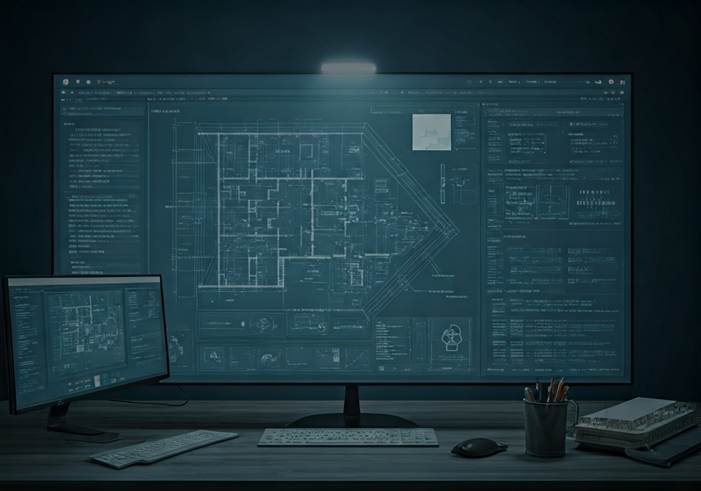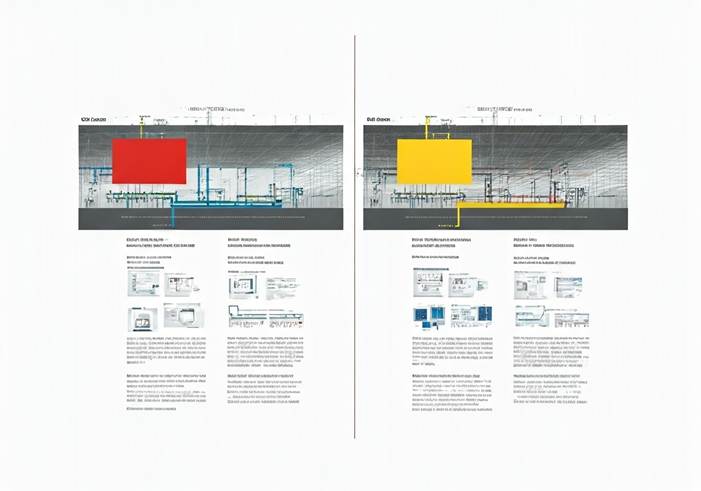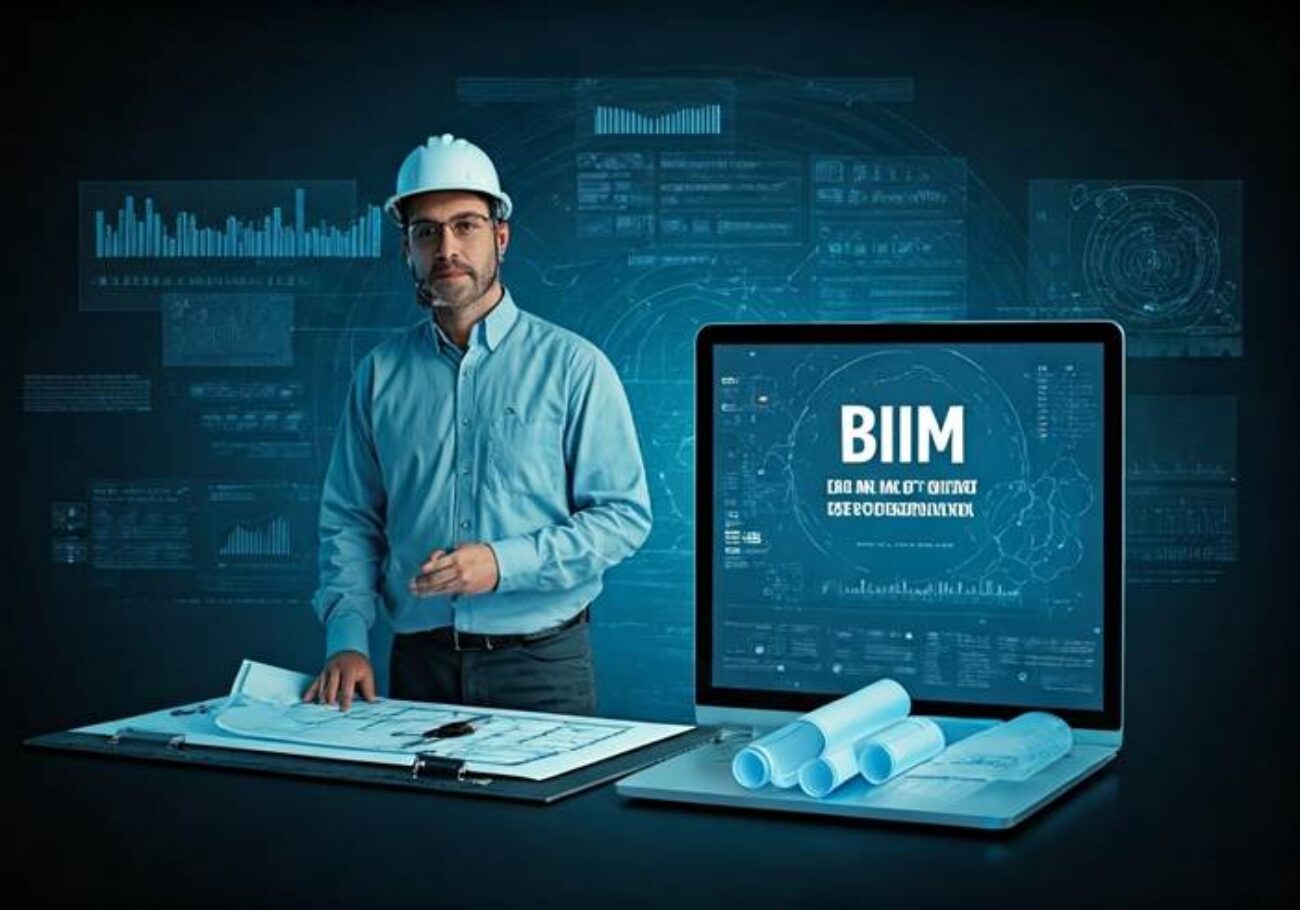Key Highlights
- Building Information Modeling (BIM) is transforming MEP coordination in the construction industry, offering a significant advantage over traditional methods.
- BIM MEP coordination enables clash detection and resolution in the digital realm, reducing costly rework and project delays.
- Collaboration and communication are enhanced through shared 3D models, ensuring all stakeholders are on the same page.
- MEP coordination is crucial for ensuring building systems like HVAC, electrical, plumbing, and fire protection are properly integrated and compliant with building codes.
- Real-world success stories demonstrate the tangible benefits of BIM MEP coordination, including improved project efficiency, cost savings, and reduced risks.
Introduction
In construction, the smooth integration of Mechanical, Electrical, and Plumbing (MEP) systems is key for a successful project. The MEP Coordination process, which includes considering energy efficiency, component size, and typical stages, used to depend on old 2D drawings. Now, it has changed thanks to Building Information Modeling (BIM). BIM MEP coordination provides a flexible and team-oriented method. This leads to a smoother and more budget-friendly construction process.
What is MEP Coordination Process?
MEP coordination is an important part of building construction. It makes sure that all MEP systems in a building are installed and work well. This includes Heating, Ventilation, and Air Conditioning (HVAC), electrical, plumbing, and fire protection. The goal is to avoid any problems or clashes between these systems.
The coordination process includes looking at service drawings and 3D models. It helps in spotting any issues between the systems. After identifying these issues, solutions are found to fix them. Good MEP coordination is key. It helps to prevent expensive rework and delays. It also makes sure that all systems run safely and efficiently.

MEP Coordination Checklist and Compliance with Building Codes
A good MEP coordination checklist is important for a successful project. This checklist should have key items like:
- Reviewing architectural and structural models.
- Making space for MEP systems.
- Detecting and resolving clashes.
- Routing MEP systems.
- Coordinating with fire protection systems.
- Checking system elevation.
- Planning access points for maintenance.
- Ensuring it meets building codes.
By carefully looking at each item on the checklist, project teams can reduce mistakes, missed items, and problems during construction. This careful process not only makes the project run smoother but also makes sure the final building meets all safety and regulatory standards.
The Evolution of MEP Coordination: BIM and AI Integration
Traditionally, MEP coordination used 2D drawings a lot. This often caused misunderstandings and clashes that were found on-site, leading to expensive rework. Communication among different teams was often broken and unclear. This old method was slow, full of mistakes, and not very effective.
Now, the industry is moving towards digital tools, including BIM and AI integration. This change is driven by the need to work better, be more accurate, and cooperate more in construction projects. This new approach is changing how MEP coordination is done, making it more advanced and collaborative with seamless integration of building design and HVAC systems.
From Traditional Methods to BIM: A Timeline
The evolution of the MEP Coordination process highlights the shift from traditional drawing methods to the utilization of BIM and AI Integration. Initially, coordination relied heavily on manual techniques, with architects and engineers spotting and rectifying spatial issues using 2D drawings. This manual approach often resulted in construction delays and increased costs. The introduction of computer-aided design (CAD) software marked a significant improvement by allowing for more precise 2D drawings and basic 3D models, enhancing coordination and reducing clashes. However, early 3D models lacked the intelligent features required for effective Clash detection in BIM. The advent of BIM revolutionized MEP Coordination by moving away from static drawings to intelligent 3D models that store vast amounts of data about each building component, promoting building health by enabling efficient clash detection and resolution before construction issues arise.
Key Drivers for Change in the Industry
Many crucial factors have driven the industry to adopt the BIM MEP coordination process. Building projects are becoming increasingly intricate, with a demand for quicker completion times and tighter budgets. This necessitates improved teamwork-based processes. The BIM MEP coordination process facilitates smoother coordination, enhanced accuracy, and reduced errors, all of which are essential in meeting these demands.
Furthermore, the availability and affordability of BIM software have increased, making it more accessible for companies to implement. With greater access to BIM and the establishment of specific standards, the integration of BIM and AI is becoming more widespread throughout the entire construction process.
The transition from traditional methods to the BIM MEP coordination process has significantly enhanced communication and collaboration among all project stakeholders. The use of a shared digital model allows for real-time teamwork, minimizing misunderstandings and fostering transparency throughout the project. Additionally, clash detection in BIM further improves coordination and helps prevent conflicts during the construction process.
Key Elements in MEP Coordination
The MEP Coordination process is crucial for successful project implementation. Starting with a thorough review of architectural and structural plans sets the foundation for designing and placing MEP systems. Utilizing MEP coordination drawings is essential as they depict the precise layout, sizes, and connections of various systems, ensuring accurate installation.
Incorporating BIM and AI Integration in the process enhances efficiency. Modern BIM software aids in identifying clashes before construction commences, ultimately reducing rework and saving costs. Clash detection in BIM is a vital aspect that allows teams to pinpoint and rectify conflicts between systems seamlessly.
Effective communication and teamwork play a significant role in the MEP Coordination process. Maintaining a smooth information flow among architects, engineers, contractors, and other stakeholders is key. Regular coordination meetings and clearly defined roles and responsibilities help align everyone towards project goals, leading to successful outcomes.
Understanding BIM MEP Coordination
BIM MEP Coordination process involves creating an intelligent 3D model that encompasses all aspects of a building’s design and construction, including MEP systems. This model goes beyond mere shapes, as it includes crucial details such as materials, installation guidelines, and maintenance requirements. By integrating architectural design, structural elements, and MEP systems into a single digital model, we can identify and resolve issues before construction commences. The use of digital tools, such as BIM and AI integration, allows us to visualize the model in real time. This enables all stakeholders to virtually explore the building and comprehend how various systems interact, facilitating clash detection in BIM.
Defining BIM and Its Role in MEP Coordination
BIM MEP coordination process is essential for creating and managing data for a building. It utilizes digital models to illustrate the building’s appearance and functionality. This digital model serves as a valuable resource for building information, offering a solid foundation for decision-making from inception to demolition.
In the context of MEP coordination, BIM plays a crucial role in generating a detailed model encompassing all building services. This enhances the clarity and efficiency of the coordination process, minimizing errors and enhancing project outcomes. Through the integration of BIM and AI, clash detection in BIM becomes feasible, allowing for the identification and resolution of conflicts in a virtual space before actual construction commences. This not only saves time and money but also fosters improved communication among all stakeholders, promoting teamwork and reducing errors.
The Process of BIM MEP Coordination
The BIM MEP coordination process starts by collecting data from everyone involved, like architects, structural engineers, and MEP consultants. This data is used to create the BIM model, which gets updated and improved as the project moves forward. Regular coordination meetings help find and fix clashes so that all systems work well together.
BIM coordination services use advanced software tools to make the process easier. These tools can automatically find clashes, run 4D simulations (which include time), and do 5D analysis (which looks at costs).
The end result is a fully coordinated BIM model. This model acts as a helpful guide for construction. It enhances project efficiency, cuts down on extra work, and lowers the chances of expensive mistakes during building.
Role of Digital Tools and Software in MEP BIM Coordination
Digital tools and software play a crucial role in enhancing the MEP Coordination process. Utilizing programs such as Autodesk Revit, Navisworks, and BIM 360 enables the creation of detailed 3D models, facilitates clash detection in BIM, and promotes seamless teamwork.
The integration of BIM and AI technology in MEP Coordination services helps optimize designs and identify potential issues at an early stage. By incorporating these digital tools, project teams can minimize errors, improve accuracy, and accelerate project delivery timelines.

Benefits of BIM MEP Coordination Over Traditional Methods
Using BIM for MEP coordination is a big step up from old methods. With BIM, we use smart 3D models instead of basic 2D drawings. This makes working together easier and better, which cuts down on mistakes, helps control costs, and leads to better results.
BIM gives everyone involved a complete view of the project. This helps improve communication and coordination. As a result, projects become more predictable, the chances of expensive rework decrease, and the final product is of higher quality.
Enhanced Collaboration and Communication
BIM creates a teamwork area for architects, engineers, contractors, and others to work well together. It offers a central place where they can share information and coordinate designs. This ensures that everyone has the same data. Good communication is very important for successful MEP coordination.
BIM’s visual feature helps to close the communication gap between different fields. It makes it simpler to show design ideas and find possible problems. With shared 3D models, people can easily see how different systems fit together. This improves understanding and reduces mistakes and miscommunications.
Also, BIM allows for real-time collaboration. This means decisions can be made quicker and issues can be fixed faster. When someone updates the model, everyone sees the changes right away. This keeps all stakeholders with the same current understanding of the project.
Clash Detection in BIM, and Resolution
Clash detection is an important part of MEP coordination. BIM has tools that can help make this process easier. With BIM software, you can find potential problems between MEP systems, structural pieces, and architectural parts before construction starts. Detecting clashes early with BIM coordination services allows us to solve issues virtually. This can save money and time by avoiding repairs on site later.
BIM software creates clash reports. These reports show stakeholders what the problems are, where they are located, and how serious they are. This information helps them think of new design options and make smart choices to solve conflicts quickly.
Using clash detection tools in BIM needs skilled workers. Experienced BIM coordination services providers can use their knowledge to set up the right clash detection rules. They can analyze clash reports correctly and suggest the best solutions that fit the project needs.
Improved Project Efficiency and Accuracy
BIM helps projects work better by making tasks easier and reducing mistakes. By finding and fixing problems early, it can lower delays and cost overruns. BIM also helps get accurate amounts of materials, so they are ordered and arrive on time and within budget.
Having exact BIM models allows for better building and putting together mechanical, electrical, and plumbing (MEP) parts. With clear 3D models to guide them, contractors can speed up installation. This means fewer mistakes and less need to change things on-site.
In the end, the better efficiency and accuracy that BIM provides lead to saving money, finishing projects quicker, and creating higher-quality results.
Challenges and Solutions in MEP Coordination
BIM MEP Coordination has many good points, but it also has some challenges. These challenges include people not wanting to change from their old ways, needing experts who know BIM, and the cost of BIM software and training at the start. Also, different software not being the same can make it hard for teams to share data easily.
You can lessen these challenges with careful planning and teamwork. Taking a step-by-step approach to using BIM, putting money into good training programs, and encouraging a team-focused work culture can help everyone adjust well. It is also important to choose software that works well with others so that data can be shared without problems.
Real-World Applications and Success Stories
The use of BIM MEP coordination has led to many success stories around the world. These stories highlight its clear benefits in real projects. Whether it’s big infrastructure projects or complex healthcare buildings, BIM has changed the game. It helps teams work faster, saves money, and lowers mistakes.
These projects show how BIM can change the construction industry. They prove that collaboration, efficiency, and accuracy from BIM can lead to construction that is more sustainable, cost-effective, and successful.
Case Study: Implementing BIM MEP Coordination
One interesting case study looked at building a big hospital complex. Using BIM MEP coordination helped save a lot of time and money. The detailed 3D models allowed them to find over 90% of potential problems before they even started building. This smart way of working reduced the need for expensive fixes later and sped up the project.
Also, using BIM for shop drawings made the fabrication process smoother. This ensured that all parts fit well on site. Better communication and teamwork through BIM resulted in a more united project team and a good result.
This case study shows the clear benefits of BIM MEP coordination. It clearly improves how projects work, their accuracy, and their overall success.
Lessons Learned from Industry Leaders
Industry leaders who use BIM MEP coordination highlight the need for a smart plan, clear communication, and ongoing training. They point out the importance of setting clear BIM goals, defining roles and responsibilities, and encouraging teamwork from the start of the project.
Also, it’s key to adjust existing business processes to fit BIM workflows. Companies should invest in the right software and hardware and make sure they have skilled BIM professionals. Training programs should focus not just on technical skills but also on teamwork skills and BIM best practices.
By fostering a culture of constant learning and improvement, construction firms can make the most of BIM MEP coordination. This can change their design and construction processes for the better and lead to better project results.
Conclusion
Digital transformation is changing how MEP coordination works. It helps people work together better, find problems earlier, and run projects more efficiently. BIM MEP Coordination is much better than old methods because it is more accurate and effective. By using digital tools, you can get better results on your projects and solve problems in a smart way. There are many real-life success stories that show how BIM MEP Coordination is beneficial in today’s construction world. To stay ahead of the competition, you should switch to BIM MEP Coordination. This change can save you money and help you improve your processes. You can look forward to the great opportunities that digital upgrades bring for MEP coordination.
Frequently Asked Questions
What Is the Difference Between BIM MEP Coordination and Traditional Coordination?
BIM MEP coordination uses smart 3D models to find and fix problems. This is different from traditional methods, which rely on 2D drawings. 2D drawings can cause on-site conflicts and require extra work.
How Does BIM MEP Coordination Contribute to Project Savings?
BIM coordination helps save costs. It does this by finding clashes early. This means less expensive rework. It also improves designs and allows for accurate quantity takeoffs. As a result, there are fewer delays and lower construction costs.
Can Small Projects Benefit from BIM MEP Coordination?
Yes, small projects can also gain from BIM MEP coordination. It helps people work together better. It also lowers mistakes and makes tasks smoother. This leads to saving money and better results for the project.
What Are the First Steps in Transitioning to BIM MEP Coordination?
Transitioning to BIM MEP coordination means you need to do a few important things. First, you must find the key goals of the project. Next, get the support from everyone involved. Then, invest in good BIM software. Finally, offer thorough training to your team.
How is BIM MEP Coordination Shaping the Future of Construction in Canada?
BIM MEP coordination is very important for the future of construction in Canada. It helps to make things work better, encourages teamwork, and supports eco-friendly building methods.
